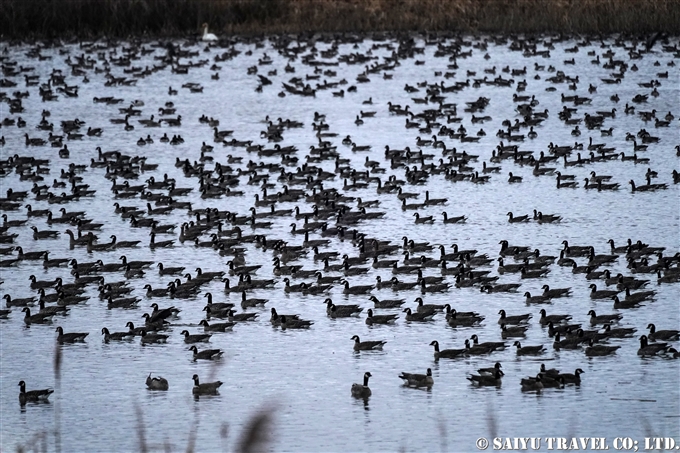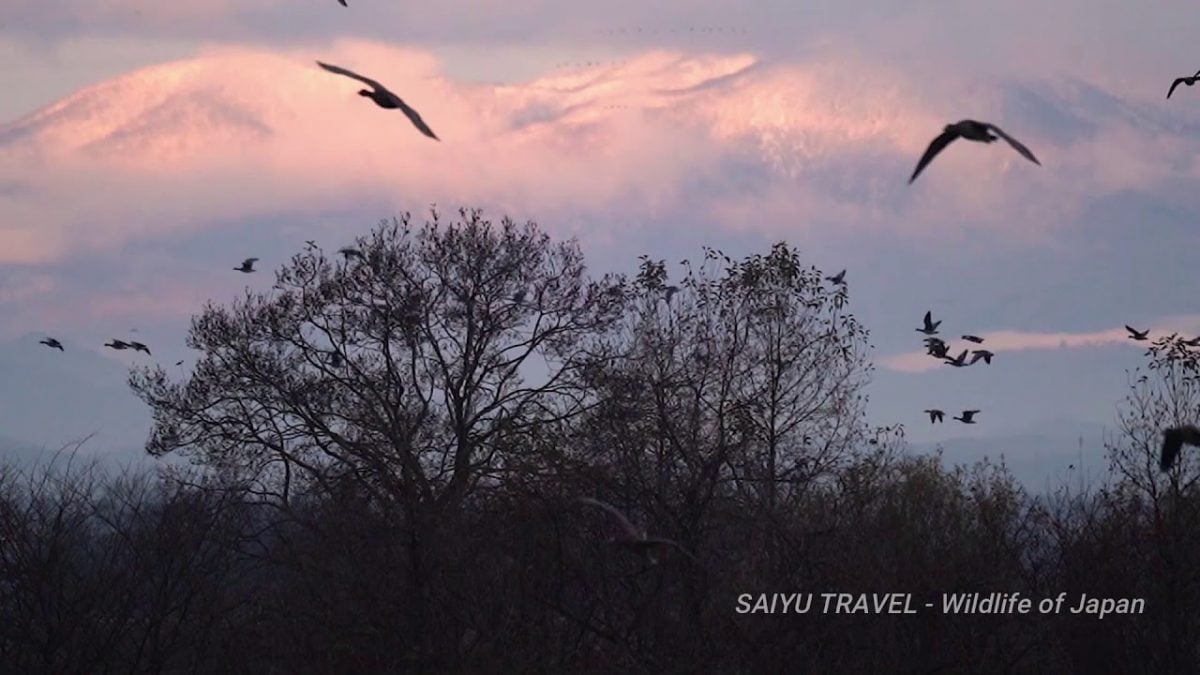
The Cackling Goose in the Kuril Islands
Once deemed extinct in the Kuril Islands when it was still under Japanese rule, the cackling geese have been reintroduced to the Islands and I was fortunate enough to encounter a flock when visiting there.
Coming to Japan for over-wintering and for breeding, the cackling goose will use the central islands of the Kuril Island Archipelago (in Japanese called ‘Chishima retto’ or in Russian called ‘Kurilskiye ostrova’). Before WWII, when the Kuril Islands were under Japanese rule, Blue Foxes (dark-colored morphs of Arctic Foxes) were introduced to the islands for the purpose of fox fur farming. As a result, the cackling goose was driven into extinction. The last record of observations was made in Miyagi Prefecture in 1935, with geese in flocks of hundreds, before they disappeared.
At first in Alaska, the fur industry was booming in the Aleutian Islands as red foxes were introduced to the islands and ended up decimating the cackling goose populations. Then in 1962, some breeding cackling geese were discovered in the Aleutian Islands. Due to conservation and breeding efforts to restore the population, the number of birds began to return. These birds were then used to help continue to restore populations in the Kuril Islands by the ‘Japanese Association for Wild Geese Protection’ in close partnership with the ‘Sendai Yagiyama Zoological Park’ (Sendai City, Miyagi Prefecture), the US Government and Russian researchers over many years. From 1995-2010, birds were released on fox-free Ekaruma Island as a project to bring them back from the brink of extinction.

So, this is about the first time that I could see these wild cackling geese. We were travelling the eastern coast of Shiashkotan Island during a “Kuril Islands Adventure Cruise” when I saw a flock of birds landing on the water. I asked aloud, “Oh, what birds are those?” Luckily, they landed relatively close enough for us to be able to ID.
The touring bird photographers and the sea bird guides were so ecstatic to see them!

These are the breeding cackling geese of the central Kuril Islands. The ones without a white ring on their necks are the juvenile individuals. We approached them in an inflatable rubber boat, keeping enough of a distance, so they did not fly off.

Cackling Goose, flying against the Shiashkotan Island backdrop, in the Kuril Islands.
Starting with a relatively small number of geese released in the central Kuril Islands, on Ekarma Island, populations expanded, and more birds learned the migration route over the years, coming back repeatedly. Currently, now the birds migrating to Japan annually number over 8,000.
That first encounter with them was in mid-August 2018. Since then, I wanted to see them here in Japan again, but didn’t have an opportunity to do so until winter of 2020, due to the Covid-19 pandemic limiting international travel, I could finally be lucky enough to see the cackling goose here with domestic travel.

These are the geese of Kabukuri-numa (wetland). I was blown away by how many there were!
I have now been on the cruises to the Kuril Islands 9 times so far, but I have only been lucky enough to see the cackling geese twice – once in 2018 and the other time in June 2019 on Ekarma Island. Due to Covid in 2020, I could not go on a trip to the Kuril Islands, but I do hope the population continues to increase!
Keeping my fingers crossed to be able to go again to the Kuril Islands!
Photo & Text: Mariko SAWADA
Observation: Aug 2018, Shashikotan Island, Kuril Islands, Russian Far East, Dec 2020, Kabukuri-numa、Japan
Reference : Mr. Masayuki Kurechi, Japanese Association for Wild Geese Protection
Tags: Kabukuri-numa, Izunuma, Kabukurinuma, Cackling Goose, Wildlife of Japan, Kuril Islands, Birds of Hokkaido, Ekarma Islands, Birds of Japan, Kuril Islands cruise, Wildlife Photography tour in Japan, Birding tour Japan, Birds Photography of Japan, Bird tour Japan, Bird Watching Japan, Wildllife in Japan











